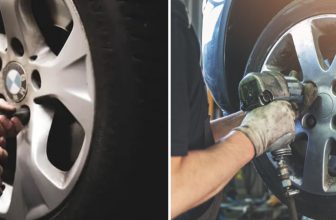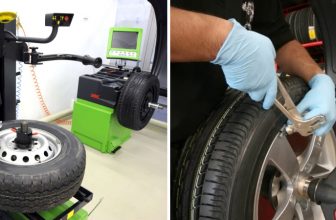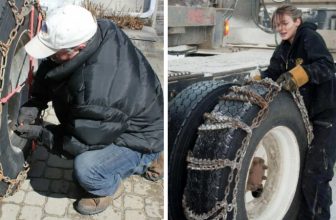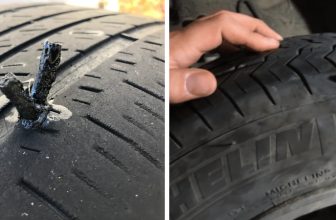How to Fix a Wobbly Tire on a Car
Do you have a wobbly tire on your car but don’t know how to fix it? You might be tempted to take it to the nearest garage for help, but fixing a wobbly tire is actually an easy task that anyone can do with the right tools and techniques.
This blog post will guide you step-by-step through the process of how to fix a wobbly tire on a car safely and effectively.
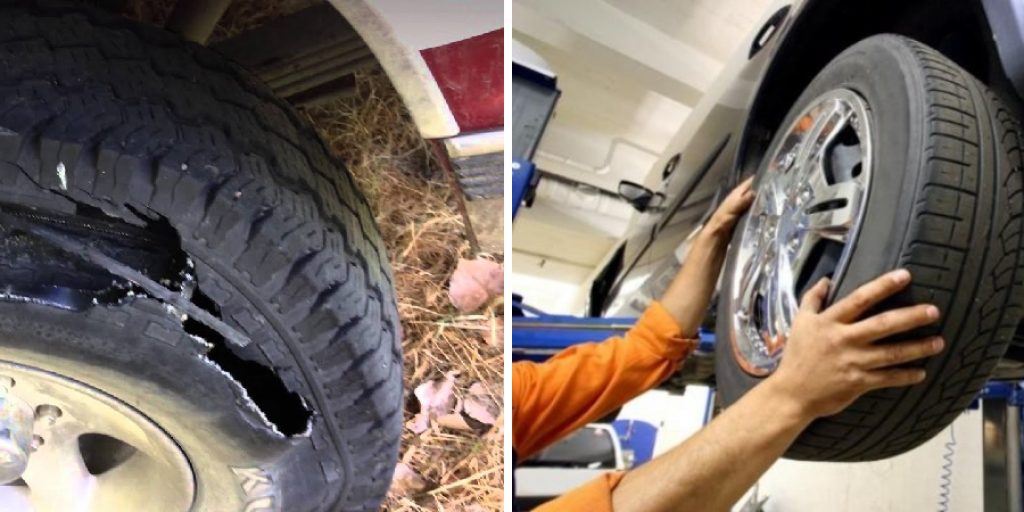
Tools and Materials You Will Need to Fix a Wobbly Tire on a Car
- Jack
- Lug wrench
- Wheel chocks (optional)
- Tire pressure gauge
- Tire iron
- Tire valve core remover
- Air compressor (not essential but makes the job easier and faster)
Step-by-Step Guidelines on How to Fix a Wobbly Tire on a Car
Step 1: Park Your Car on a Flat Surface
Find a flat and solid surface to park your car on. If you are parking on an incline, use wheel chocks to stabilize the vehicle. If you park your car on an uneven surface, it could cause the tire to become even more wobbly. Parking on a flat surface is essential for a successful repair.
Step 2: Lift the Vehicle with the Jack
Once your vehicle is securely parked, use the jack to lift it up. Place the jack under the car frame and pump until it reaches its maximum lifting capacity. Don’t forget to check that the jack is level before you start pumping. While lifting your car, ensure that the jack is stable and that it won’t slip or fall.
Step 3: Loosen the Lug Nuts with a Lug Wrench
Once the car is lifted, you can start loosening the lug nuts that keep the wheel in place. Use your lug wrench to turn all of them counterclockwise until they are loose enough. Don’t remove them completely yet as it will make it more difficult when you come to lift off the wheel. Make sure you don’t mix up the lug nuts as this can cause vibration issues.
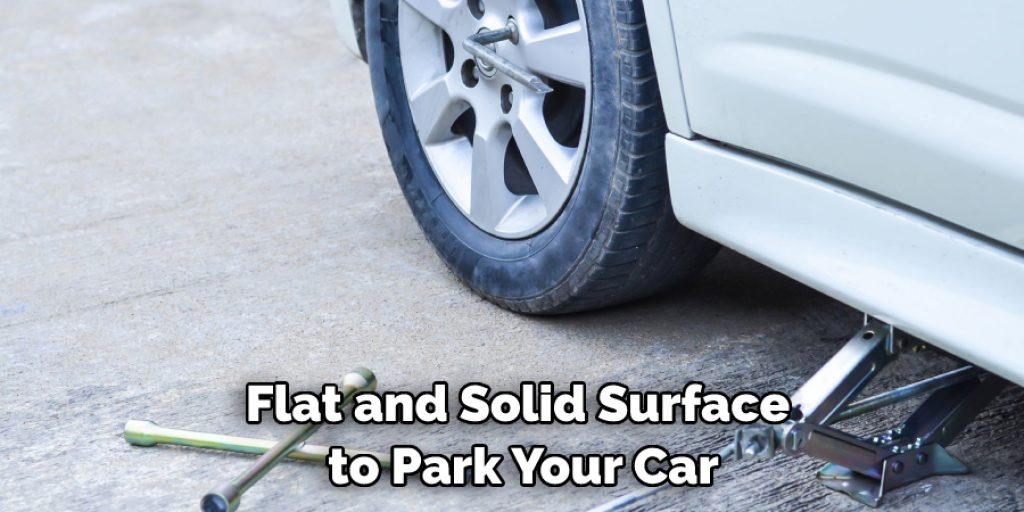
Step 4: Remove the Tire
Once all of the lug nuts are loose, use both hands to remove the tire from its frame. Be sure to lift it straight up so that it doesn’t get stuck or caught on anything. While removing the tire, take note of any signs of wear or damage. If you spot something that could be causing the wobble, make sure to address it.
Step 5: Check the Tire Pressure
Once you have removed the tire, use a tire pressure gauge to check its pressure. If it is too low or too high, you need to adjust it before putting it back onto the car. Make sure you inflate or deflate the tire until it reaches its recommended pressure.
Step 6: Adjust the Air Pressure as Necessary
If your tire needs adjusting, simply use an air compressor to inflate or deflate it as needed. Remember to check the pressure again with the tire pressure gauge before proceeding. While adjusting the tire, check for any signs of wear or damage. If you spot something, it may be necessary to replace the tire altogether.
Step 7: Replace the Tire
Once you’ve adjusted the air pressure, place your tire back onto its frame and tighten all of the lug nuts until they are secure. If any of them are worn or damaged then it is a good idea to replace them with new ones.
Step 8: Lower the Vehicle
Once all of the lug nuts are secure, you can lower your vehicle back down to the ground and remove the jack. Make sure that all of the lug nuts are tightened properly before driving away. You should also check that the tire is no longer wobbly.
Congratulations, you have now successfully fixed a wobbly tire on your car! If you have followed these steps carefully then you should now have a safe and secure wheel that won’t wobble as you drive. It is always wise to check your tires every few weeks to make sure that they are properly inflated and securely fastened.
Additional Tips and Tricks to Fix a Wobbly Tire on a Car

1. Check if the lug nuts are tight enough. If not, use a torque wrench to tighten each one in a star pattern until they are snug.
2. Check the wheel balance by using a tire balancing machine or spinning the wheel manually to see if it wobbles more on one side than another. If it does, add one or two-wheel weights to the tire.
3. Replace the tire if it is severely worn or damaged. This will help ensure a smooth ride and reduce wear on other components of the vehicle.
4. Check for any obstructions in the brake system that may be causing vibration, such as air gaps in the brake shoes, a warped disc, or a sticking caliper.
5. If the tire has been recently replaced, make sure that it is inflated to the recommended amount for your vehicle’s make and model.
6. Take your car to a professional mechanic if you are unable to determine the cause of the wobble after following all of these steps. They will be able to diagnose and fix the problem quickly.
7. Finally, consider investing in a set of wheel spacers to help keep the wheels and tires balanced while driving. This will help reduce vibration and make your car run smoother.
Good luck with fixing your wobbly tire! With these additional tips and tricks, you can have a safe and smooth ride ahead of you.
Things You Need to Consider While Fixing a Wobbly Tire on a Car
1. Check the Tire Pressure:
Make sure to check the tire pressure and adjust it as needed to ensure that it is at its optimal level for optimal performance. This will help prevent wobbling when driving and make sure your tires last longer. If the tire pressure needs to be adjusted, you should use a tire pressure gauge to make sure the air pressure is within the recommended range.
2. Check for Tire Wear and Tear:
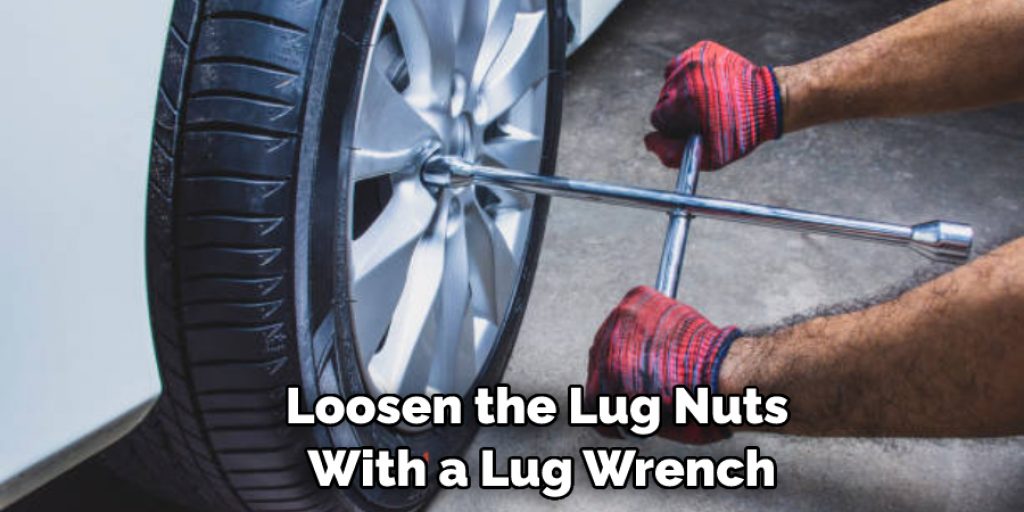
Inspect your tires for any signs of uneven wear or damage that could cause wobbling when driving. Even if it looks like the treads are in good condition, they might be worn down unevenly which can cause wobbling when driving. If you find any signs of wear or damage, it’s best to replace the tires as soon as possible before any further damage is done.
3. Inspect Wheel Alignment:
Take a look at your car’s wheel alignment and make sure it is properly adjusted. Even a slight deviation from the perfect wheel alignment can cause wobbling when driving. If it looks like your wheels are out of alignment, you should take your car to an auto shop for a professional inspection and adjustment as soon as possible.
4. Check Tire Balance:
If all else fails, you may need to get your tires balanced. Unbalanced tires can cause wobbling when driving, and the most common cause of uneven tire balance is an incorrect tire rotation pattern. If you suspect that this is the case, take your car to a tire shop for balancing.
Fixing a wobbly tire can be an easy and inexpensive fix as long as you take the time to inspect your tires and make sure that everything is in proper working order. By inspecting the tire pressure, wear and tear, wheel alignment, and tire balance, you can ensure that your tires are in good condition and ready for the road.
Frequently Asked Questions
How Do I Know When My Tire Needs to Be Fixed?
If your tire wobbles and seems off-balance, it may need to be fixed. To determine the severity of the issue, you can also check if there is excessive wear on one side of the tire treads or if it appears cracked or damaged.
How Long Should It Take to Fix a Wobbly Tire?
The time it takes to fix a wobbly tire will depend on the severity of the problem. For minor wobbling, you can often make adjustments in a matter of minutes. However, more severe cases may require additional parts or labor and could take several hours.
What Supplies Do I Need to Fix a Wobbly Tire?
In most cases, you will need a tire pressure gauge and a torque wrench to make the necessary adjustments. If there is extensive damage or wear, you may also need to purchase new parts like wheel weights or rim bands.

Conclusion
Knowing how to fix a wobbly tire on a car is essential to ensure your tire remains in good condition and safe to drive on. By understanding the signs of a wobbly tire and having the right supplies, you can make the necessary adjustments quickly and efficiently. Keep in mind that more severe cases may require additional parts or labor, so it’s important to consult a professional if needed. With these tips, you’ll be back on the road in no time.

